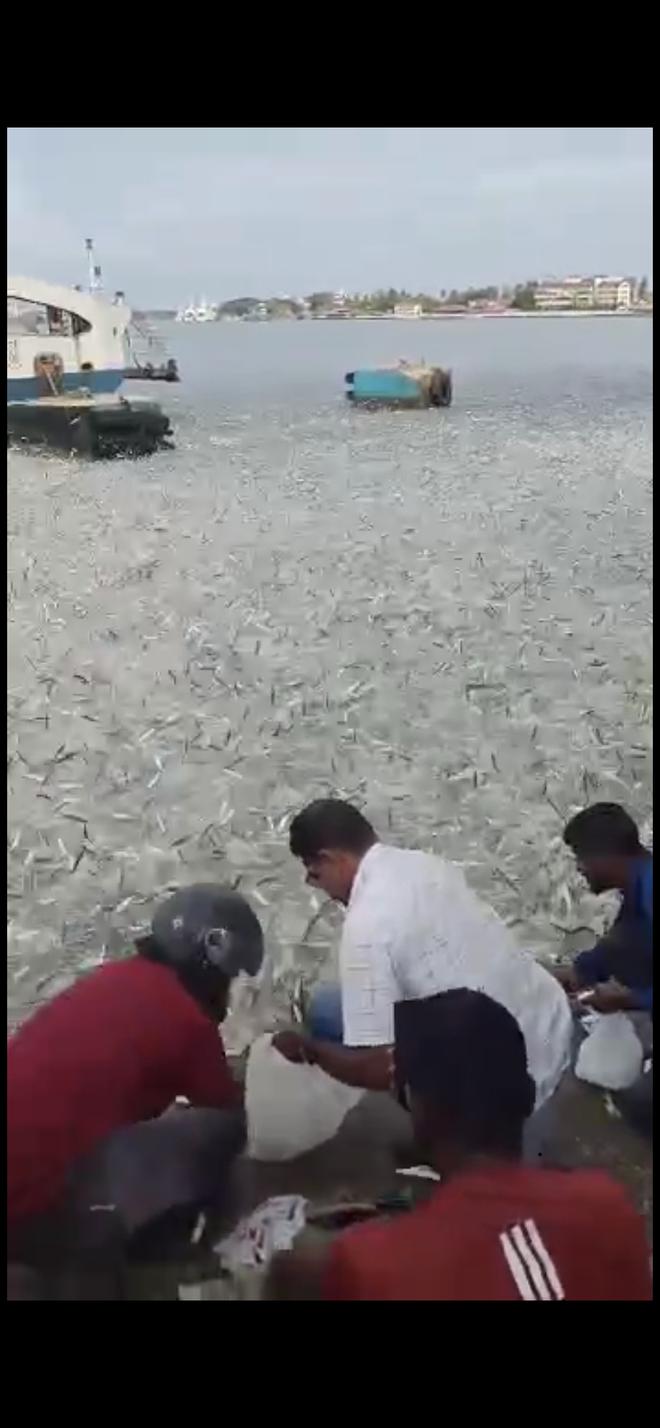A surge of sardines in coastal waters in Fort Kochi and Vypeen on Monday has startled fishermen and scientists alike.
Scientists have, however, said the dumping of oil sardines on the shore by waves is not a case of mud bank formation or traditional ‘chakara’. A marine scientist said that when fishermen found an abundance of fish in a place, they tended to call it a ‘chakara’ as a way of expression to indicate the plentifulness.
A resident said that the flood of oil sardines was noticed both at the sea mouth near Fort Kochi and Vypeen and the phenomenon lasted for about two hours during which period people were easily picking up the fish with bare hands.
A paper published by scientists at the Central Marine Fisheries Research Institute on a similar phenomenon near Kanhangad in September of 2019 called it a “sardine run”. But scientists have not reached a definite conclusion on the factors that trigger such a phenomenon.

The Kanhangad event was observed during the last phase of summer monsoon in 2019. It was associated with a bloom of the diatom Fragilariopsis oceanica. Analysis of water samples and gut content of oil sardines showed a dominance of diatom Fragilariopsis oceanica, a major diet component for oil sardines. So the flood of sardines may be the result of a feeding frenzy.







